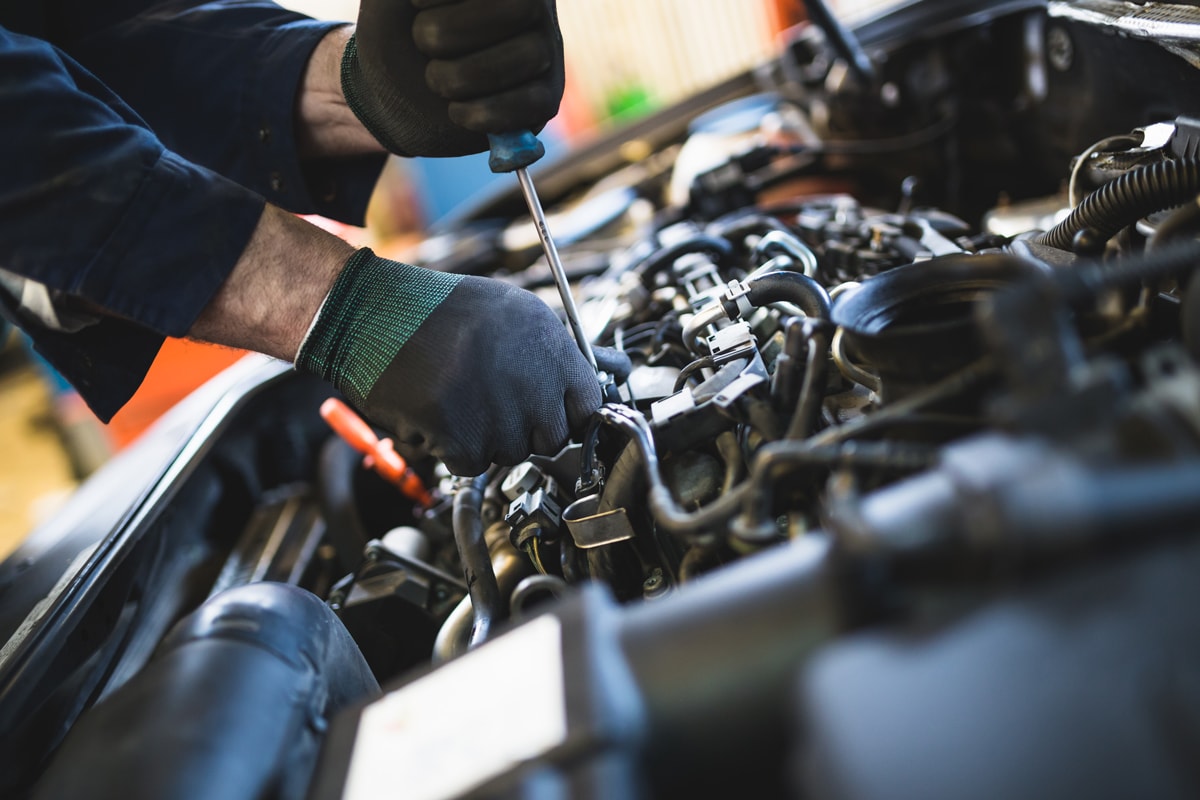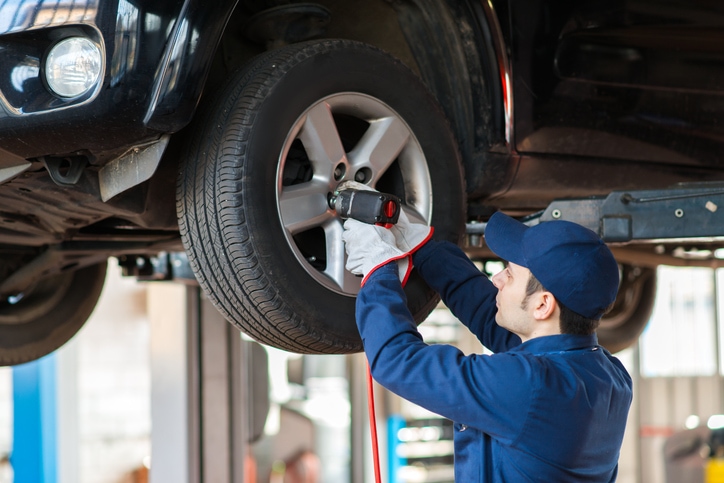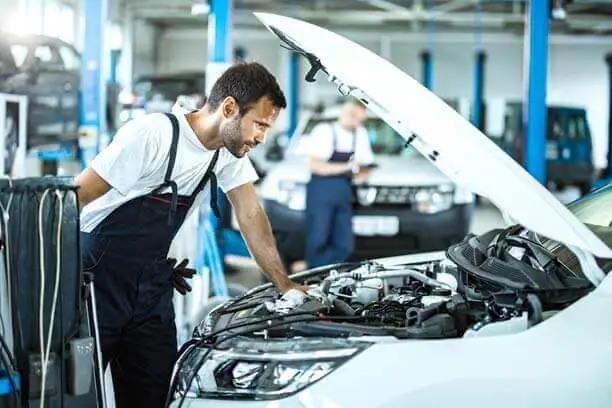All Categories
Featured
Your vehicle's suspension system plays a crucial function in supplying a steady and smooth experience, guaranteeing that you keep control on numerous terrains. It absorbs roadway shocks, sustains the vehicle's weight, and keeps tires in contact with the roadway. Appropriate upkeep of this complicated system is critical for safety and efficiency. Adhere to these actions to ensure your suspension system continues to be in optimum problem.
![]()
Leaking Fluid: Shocks or struts may leakage oil when they're put on. Harmed Springs: A sagging or uneven position could indicate a damaged spring. Used Bushings or Sphere Joints: Cracks, tears, or uncommon activity throughout procedure recommend wear. Corrosion or Deterioration: With time, steel components might rust, bring about weakened elements. Address any kind of problems immediately by getting in touch with a specialist mechanic.
![]()
Feathered Footstep: Indicates bad placement. Bald Edges: Suggests worn shocks or struts triggering extreme bouncing. Turn your tires on a regular basis and preserve the right tire stress to reduce stress on the shock absorber. 3. When Required, replace Shocks and Shows Off. Struts and shocks are important to your suspension's performance. Indicators they need changing consist of:
A bouncy or harsh adventure. When stopping, nose-diving. Excessive body roll when turning. Replacing these components at the recommended intervals (every 50,000 to 100,000 miles, relying on driving problems) can bring back ride top quality and handling.
Prevent driving over holes, aesthetics, and rate bumps at high rates. Take corners gently to stop too much side pressures. Reduce on harsh roadways to decrease deterioration. 6. Set Up Routine Alignments. Wheel positioning ensures that your tires and suspension job sympathetically. Misaligned wheels can trigger guiding problems, unequal tire wear, and added stress and anxiety on suspension elements. Schedule a placement check annually or after hitting a substantial hole.
![]()
Verdict. A well-kept shock absorber boosts driving convenience, boosts safety and security, and prolongs the life of your car. By staying proactive with evaluations, dealing with problems promptly, and driving responsibly, you can maintain this vital system for years ahead. Buy appropriate suspension maintenance today, and enjoy a much safer, smoother trip on every trip.

- Inspect Suspension Parts Frequently. Regular aesthetic evaluations can help determine prospective troubles early. Search for the following signs:
Leaking Fluid: Shocks or struts may leakage oil when they're put on. Harmed Springs: A sagging or uneven position could indicate a damaged spring. Used Bushings or Sphere Joints: Cracks, tears, or uncommon activity throughout procedure recommend wear. Corrosion or Deterioration: With time, steel components might rust, bring about weakened elements. Address any kind of problems immediately by getting in touch with a specialist mechanic.

- Screen Tire Use. Uneven tire wear often indicates suspension issues. :
Feathered Footstep: Indicates bad placement. Bald Edges: Suggests worn shocks or struts triggering extreme bouncing. Turn your tires on a regular basis and preserve the right tire stress to reduce stress on the shock absorber. 3. When Required, replace Shocks and Shows Off. Struts and shocks are important to your suspension's performance. Indicators they need changing consist of:
A bouncy or harsh adventure. When stopping, nose-diving. Excessive body roll when turning. Replacing these components at the recommended intervals (every 50,000 to 100,000 miles, relying on driving problems) can bring back ride top quality and handling.
- Prevent Overloading Your Vehicle. Straining your vehicle puts unneeded stress on the shock absorber. Surpassing your vehicle's weight ability can cause premature wear and reduced performance. Constantly examine your proprietor's manual for the maximum load limit and pack accordingly.
- Bear in mind Your Driving Practices. Driving behaviors significantly affect the health and wellness of your shock absorber. To lower pressure:
Prevent driving over holes, aesthetics, and rate bumps at high rates. Take corners gently to stop too much side pressures. Reduce on harsh roadways to decrease deterioration. 6. Set Up Routine Alignments. Wheel positioning ensures that your tires and suspension job sympathetically. Misaligned wheels can trigger guiding problems, unequal tire wear, and added stress and anxiety on suspension elements. Schedule a placement check annually or after hitting a substantial hole.
- Lubricate Moving Components. Some suspension components, like sphere joints and bushings, benefit from occasional lubrication. This decreases friction, reduces wear, and expands their lifespan. Check your proprietor's guidebook or consult your auto mechanic for certain lubrication suggestions.
- Focus On Normal Specialist Examinations. While do it yourself upkeep assists, specialist evaluations are necessary for recognizing concealed problems. Specialists can evaluate hard-to-spot problems like used control arms or concealed architectural damages. Normal examinations additionally offer comfort, guaranteeing all parts are functioning properly.

Verdict. A well-kept shock absorber boosts driving convenience, boosts safety and security, and prolongs the life of your car. By staying proactive with evaluations, dealing with problems promptly, and driving responsibly, you can maintain this vital system for years ahead. Buy appropriate suspension maintenance today, and enjoy a much safer, smoother trip on every trip.
Latest Posts
Find Budget-Friendly Auto Repairs with Montclare’s Monthly Service Specials
Published May 28, 25
1 min read
Explore Auto Services & More: Comprehensive Auto Care Solutions from Montclare Auto Repair
Published May 27, 25
1 min read
Explore the Premier Auto Repair Deals in Montclare, Chicago
Published May 26, 25
1 min read
More
Latest Posts
Find Budget-Friendly Auto Repairs with Montclare’s Monthly Service Specials
Published May 28, 25
1 min read
Explore Auto Services & More: Comprehensive Auto Care Solutions from Montclare Auto Repair
Published May 27, 25
1 min read
Explore the Premier Auto Repair Deals in Montclare, Chicago
Published May 26, 25
1 min read